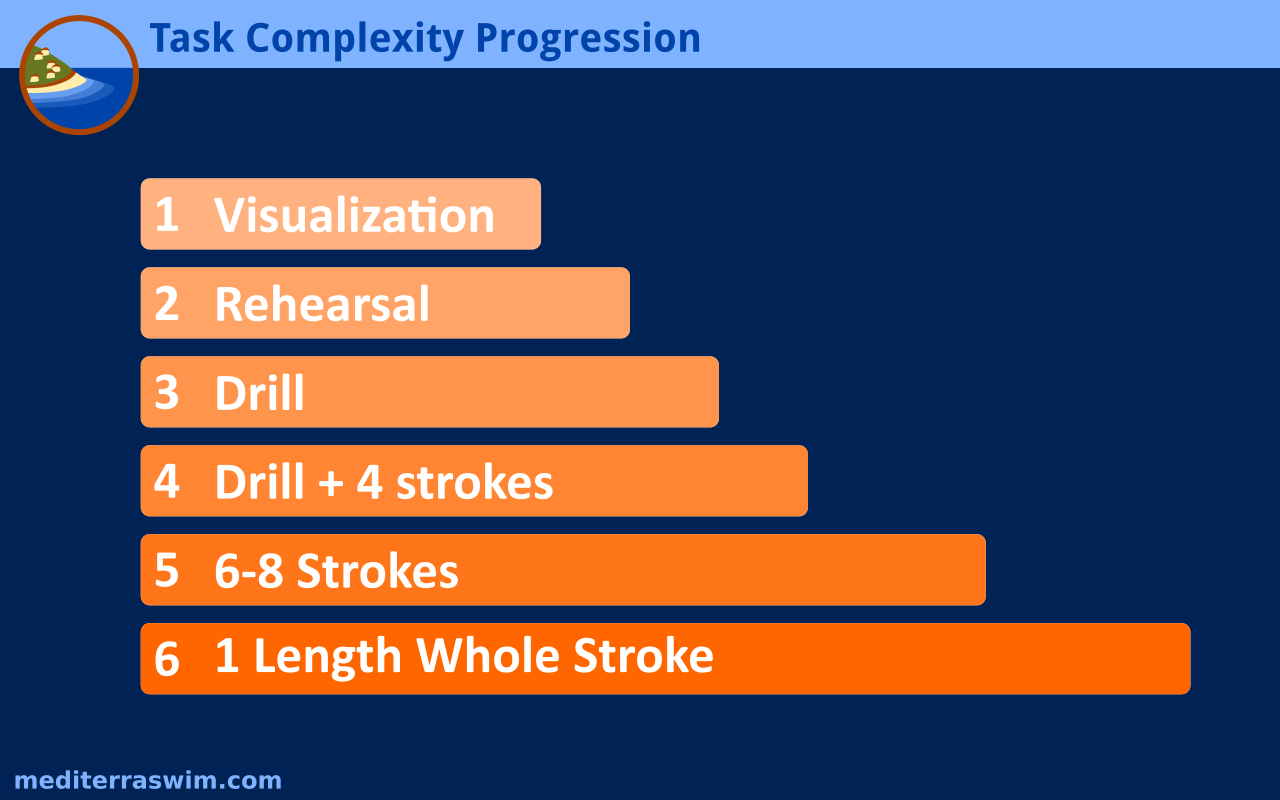TI practice can be customized to any swimmer at any level by adjusting variables of complexity for the neuro-muscular system. These are the basic skill-building tasks that can be used in any section of time in your practice.
They are listed in order of increasing complexity. Choose a starting activity that allows you to successfully execute the skill most of the time and then two more of gradually increasing complexity where you will challenge that skill further.

Visualization can be done anywhere. Standing or laying still, or put part of your body in similar position to the stroke and just imagine yourself moving in the way you intend. Do repeats of this imaginary motion just as you would do repeats in the water.
A Rehearsal is done on land or standing in water to isolated a small movement pattern.
A Drill is any activity that slows down time and isolates a particular movement pattern so it is easier to concentrate and control.
Drills may be done for a few seconds and immediately followed by a few Whole Strokes, with or without breathing.
Whole Stroke is continuous strokes without interruption.
Whole stroke with Rest Intervals are a series of lengths with a certain amount of rest time in between. Rest can be passive (waiting at the wall), or active (doing a drill, for example).
Rest is meant not only to recover the heart rate, but more importantly, to recover the attention.

